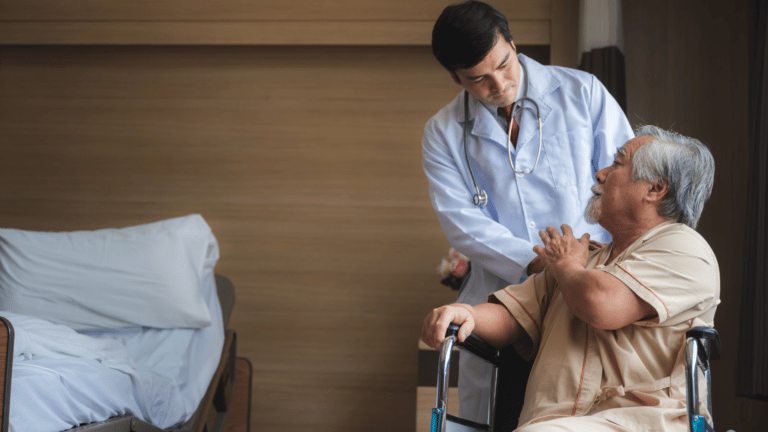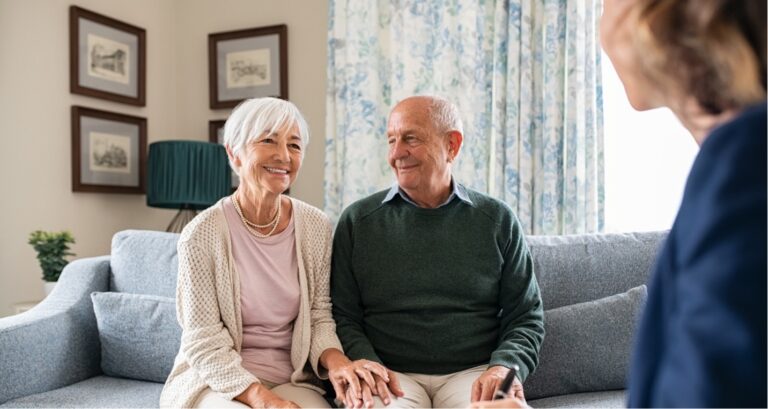Mom Fell Last Week: Understanding the Impact and Next Steps for Senior Safety
The phone call every adult child dreads: “Mom fell, and we’re at the emergency room.” In that moment, your world shifts as you rush to be by her side, your mind racing with questions and concerns about what this means for her health, independence, and future.
If your mom has recently experienced a fall, you’re likely feeling a mixture of relief that she’s okay and worry about what comes next. Falls among older adults are unfortunately common, but they’re also often a significant turning point that signals the need for increased attention to safety and care planning.
While it’s natural to hope this was just a one-time incident, statistics tell us that falls are rarely isolated events. Understanding the factors that contribute to falls and taking proactive steps to prevent future incidents can help protect your loved one while preserving their independence and quality of life.
The most important thing to remember is that a fall doesn’t have to mean the end of independent living. With proper assessment, planning, and support, many seniors can continue to live safely in their own homes while significantly reducing their risk of future falls.
Understanding the Serious Reality of Senior Falls
Falls are the leading cause of injury-related death among adults 65 and older, and they’re responsible for more than 3 million emergency department visits each year. Even when falls don’t result in serious injury, they often lead to a fear of falling that can dramatically impact a senior’s willingness to stay active and engaged.
However, falls aren’t an inevitable part of aging. Most falls are preventable when families understand the risk factors and take appropriate action to address them. The key is recognizing that a fall is often a symptom of underlying issues that need attention rather than just an unfortunate accident.
After a fall, many families focus solely on treating any immediate injuries while overlooking the opportunity to prevent future incidents. Taking a comprehensive approach to fall prevention can make the difference between ongoing safety concerns and restored confidence in daily activities.
Common Causes and Risk Factors for Falls in Seniors
Medication-Related Factors
Many medications commonly prescribed to older adults can increase fall risk through side effects like dizziness, drowsiness, or changes in blood pressure. Even over-the-counter medications and supplements can contribute to fall risk, especially when multiple medications are taken together.
Blood pressure medications, sleep aids, pain medications, and even some antidepressants can affect balance and coordination. Additionally, sudden changes in medication dosages or starting new medications can temporarily increase fall risk while the body adjusts.
Vision and Hearing Changes
Age-related changes in vision, including decreased depth perception, reduced peripheral vision, and difficulty adjusting between light and dark environments, significantly increase fall risk. Cataracts, glaucoma, and macular degeneration can all impact the ability to see obstacles or judge distances accurately.
Hearing loss can also contribute to falls by affecting balance and spatial awareness. The inner ear plays a crucial role in maintaining balance, and hearing problems can sometimes indicate issues with the balance system.
Physical Strength and Balance Decline
Gradual loss of muscle strength, flexibility, and balance is common with aging, but these changes can often be slowed or improved with appropriate exercise and activity. Conditions like arthritis, osteoporosis, or previous injuries can further impact mobility and stability.
Foot problems, including poorly fitting shoes, are also significant contributors to fall risk. Changes in foot structure, decreased sensation, or painful conditions can affect how someone walks and maintains balance.
Home Environment Hazards
Many falls occur in familiar environments where hazards have developed gradually over time. Poor lighting, loose rugs, cluttered walkways, uneven surfaces, and lack of handrails or grab bars create unnecessary risks throughout the home.
Bathrooms are particularly high-risk areas due to wet surfaces, hard fixtures, and the need to change positions frequently. Stairs, both indoor and outdoor, present ongoing challenges, especially when lighting is inadequate or handrails are missing.
Immediate Steps After a Fall
Medical Evaluation and Follow-Up
Even if your mom seems fine after a fall, a thorough medical evaluation is important. Some injuries, particularly head injuries or internal bleeding, may not be immediately apparent. Additionally, the fall itself may indicate underlying health issues that need attention.
During the medical evaluation, be sure to provide a complete list of all medications, including over-the-counter drugs and supplements. Discuss any changes in your mom’s health, mobility, or daily functioning that you’ve noticed recently.
Don’t forget to ask about follow-up care recommendations. Depending on the circumstances of the fall, your mom might benefit from physical therapy, vision screening, medication review, or other specialized evaluations.
Documenting the Incident
While the details are fresh in everyone’s memory, document what happened leading up to and during the fall. This information can be valuable for healthcare providers trying to identify contributing factors and prevent future incidents.
Note the time of day, lighting conditions, what your mom was doing, any symptoms she experienced beforehand, and environmental factors that may have played a role. This documentation can help identify patterns if future falls occur.
Creating a Comprehensive Fall Prevention Plan
Professional Fall Risk Assessment
A professional fall risk assessment can provide valuable insights into your mom’s specific risk factors and help prioritize interventions. This assessment might include evaluation of strength, balance, gait, vision, medications, and cognitive function.
Many healthcare providers offer fall risk assessments, and some communities have specialized fall prevention programs. Physical therapists are particularly skilled at identifying movement and balance issues that contribute to fall risk.
Home Safety Modifications
A thorough home safety evaluation can identify and address environmental hazards that increase fall risk. This might include:
- Lighting Improvements: Ensuring adequate lighting throughout the home, especially in hallways, stairways, and bathrooms. Motion-activated lights can be particularly helpful for nighttime navigation.
- Bathroom Safety: Installing grab bars in showers and near toilets, using non-slip mats, and considering a shower chair or raised toilet seat if needed.
- Stair Safety: Ensuring handrails are secure and extend the full length of stairs, improving lighting, and considering stair treads for better traction.
- General Home Modifications: Removing or securing loose rugs, clearing walkways of clutter, and ensuring frequently used items are easily accessible without climbing or stretching.
Medication Review and Management
A comprehensive medication review with a healthcare provider or pharmacist can identify medications that may be contributing to fall risk. This review should include all prescription medications, over-the-counter drugs, and supplements.
Sometimes, medication adjustments, timing changes, or alternative treatments can significantly reduce fall risk while still addressing underlying health conditions. Never stop or change medications without professional guidance.
Exercise and Physical Activity
Appropriate exercise programs can significantly improve strength, balance, and flexibility, reducing fall risk while maintaining independence. Programs specifically designed for fall prevention, such as tai chi or specific balance training exercises, have proven particularly effective.
Physical therapy can be especially valuable if your mom has specific strength or balance deficits identified during assessment. A physical therapist can design a personalized exercise program that addresses her specific needs and limitations.
When to Consider Additional Support
Recognizing Increased Care Needs
A fall often signals that your mom’s care needs may be changing. This doesn’t necessarily mean she can’t continue living independently, but it may indicate that additional support would be beneficial for her safety and your peace of mind.
Consider whether your mom would benefit from help with activities that put her at higher risk for falls, such as cleaning, shopping, or home maintenance tasks. Sometimes having assistance with these activities allows seniors to conserve energy for safer activities while reducing overall fall risk.
Professional Care Options
- Companion Care: Non-medical assistance with daily activities, transportation, and companionship can help reduce fall risks while providing social interaction and support.
- Home Health Services: Skilled nursing services can provide medication management, health monitoring, and coordination with healthcare providers to address medical factors that contribute to fall risk.
- Personal Emergency Response Systems: These devices can provide immediate access to help if a fall does occur, offering both safety and peace of mind for families.
- Care Management: Professional care managers can coordinate fall prevention efforts, manage healthcare appointments, and ensure all aspects of your mom’s safety plan are working together effectively.
Supporting Your Mom’s Emotional Well-Being
Addressing Fear and Anxiety
After a fall, many seniors develop a fear of falling again that can lead to decreased activity and social isolation. This fear can actually increase fall risk by leading to decreased strength and balance over time.
Acknowledge your mom’s concerns while focusing on positive steps that can improve her safety and confidence. Emphasize that fall prevention measures are about maintaining independence rather than restricting activities.
Consider counseling or support groups if fear of falling is significantly impacting your mom’s quality of life. Many communities offer support groups specifically for seniors who have experienced falls.
Maintaining Independence and Dignity
It’s important to involve your mom in decision-making about safety modifications and care planning. Respect her preferences and concerns while working together to find solutions that enhance safety without unnecessarily restricting her independence.
Focus on modifications and support that enable rather than limit activities. The goal is to help your mom continue doing the things she enjoys while reducing the risk of future falls.
Moving Forward with Confidence
A fall can be a frightening experience for everyone involved, but it can also be an opportunity to take proactive steps that significantly improve your mom’s safety and your family’s peace of mind. The key is approaching fall prevention as a comprehensive effort rather than simply hoping it won’t happen again.
Remember that fall prevention is an ongoing process that may need to be adjusted as your mom’s needs change over time. Regular reassessment and willingness to modify the plan as needed can help ensure continued safety and independence.
Most importantly, you don’t have to navigate this process alone. Professional resources are available to help assess risks, implement safety measures, and provide ongoing support that allows your mom to continue living safely in her own home.
At Reflections Management and Care, we understand the concerns families face after a loved one experiences a fall. Our experienced team can provide comprehensive fall risk assessments, coordinate home safety modifications, and offer ongoing support services that help prevent future incidents while preserving independence.
If you’re concerned about your mom’s fall risk or want to develop a comprehensive fall prevention plan, contact us today. We’re here to help you create a safe environment where your loved one can continue to thrive with confidence and dignity.








